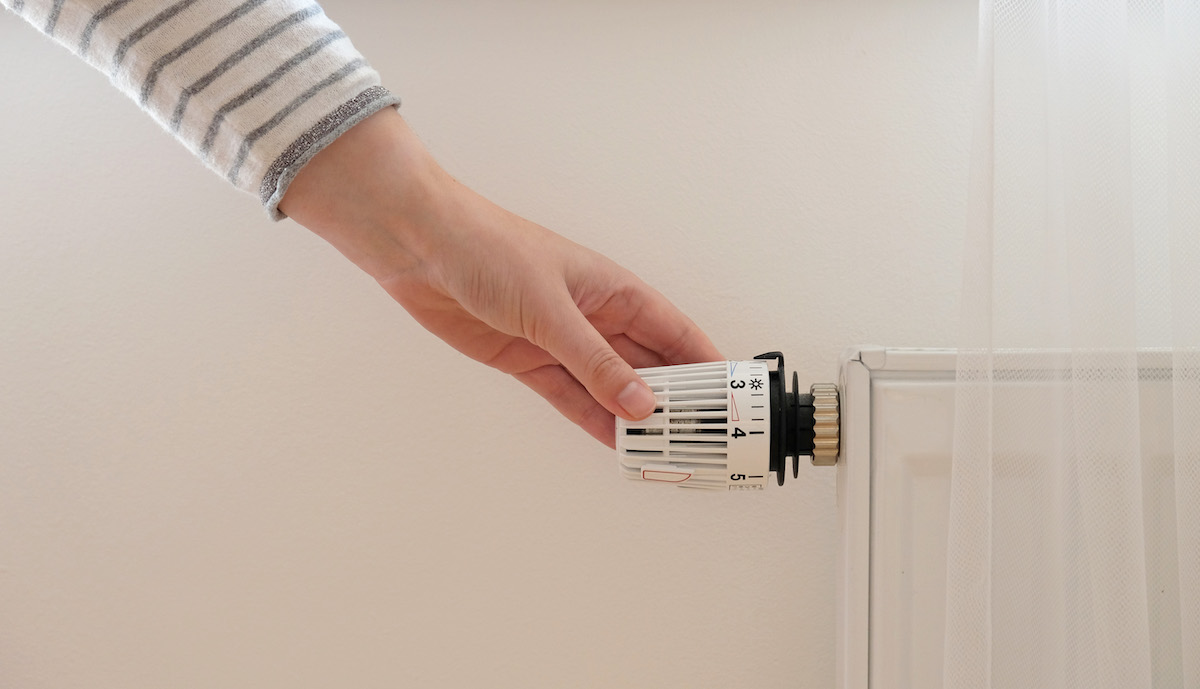Due to the ongoing COVID-19 pandemic, many of us are working from home more often than usual. Working from home brings several environmental benefits, including a reduced commute and lower office building energy needs. However, it means using more energy at home than usual. To help, read on to discover how to save energy while working from home.
Save Energy on Your Computer
Table of contents [Show]
- Save Energy on Your Computer
- Save Energy While Working From Home by Using a Smart Powerbar
- Upgrade to Energy Star Office Equipment
- Stay in One Place
- Switch to LED Lightbulbs
- Service or Replace Your HVAC System
- Modify Your Thermostat Temperature
- Install a Smart Thermostat to Save Energy While Working from Home
- Use a Dishwasher
- Don’t Overflow the Kettle
- Save Energy While Working From Home by Thinking About Lighting
- Conclusion: Many Ways to Save Energy While Working From Home
There are various ways that you can save energy on your computer while working from home. Firstly, all modern computers have built-in settings that can help you save energy. Take a look at your system preferences, and select low-power modes when possible.
Next, consider using a laptop instead of a desktop computer. Laptops consume 80% less energy than desktop computers, meaning that switching over is an excellent way for you to save energy. However, whatever type of computer you use, remember to turn it off at night to save energy.
Working from home involves having more appliances turned on during the day than usual. When plugged in, electronics are drawing energy, even when not in use. Therefore, invest in a smart powerbar, which will detect when an appliance is on standby and shut off its power.
The primary energy conservation program Greensaver delivers – the Save on Energy Energy Affordability Program – offers smart power bars free of charge to eligible participants.
Upgrade to Energy Star Office Equipment
ENERGY STAR-certified office equipment – including computers and printers – use less energy without reducing performance. This reduced energy consumption can save you money. For example, replacing laser printers with ENERGY STAR models can save $267 per unit per year.
Stay in One Place
Save energy while working from home by remaining in one location. This way, you can keep the lights off and turn off your HVAC system everywhere except where you are working.
Switch to LED Lightbulbs
Consider upgrading your lights to LED bulbs to save energy while working from home. LED lightbulbs are the most energy-efficient lightbulbs on the market today. LEDs consume significantly less energy than both incandescent and Compact Fluorescent Lightbulbs (CFLs). This efficiency is partly due to its design. CFLs and incandescent release between 80 and 90% of their energy as heat, while LEDs emit no heat.
While LED lightbulbs cost more upfront than CFLs and incandescent bulbs, they are the more cost-effective option. Based on two hours a day of usage, at an electricity rate of 15 cents per kWh, LEDs have an annual energy cost of $1.32, compared to $6.34 for incandescent bulbs and $1.59 for CFLs.
Finally, LEDs have a rated life of up to 50,000 hours, which is around 50 times longer than incandescent bulbs and 8-10 times longer than the typical CFL. By purchasing LEDs instead of other types of bulbs, you will save yourself energy and money.
The Energy Affordability Program – which we deliver on behalf of Save on Energy – offers LED lightbulbs free of charge to eligible participants.
Service or Replace Your HVAC System
If you are working from home, you will be relying more on your HVAC system to ensure your home is at a comfortable temperature. Therefore, it is vital to ensure it is operating correctly.
It is a good idea to have your system checked by a licensed Heating, Ventilation and, Air Conditioning (HVAC) technician to ensure optimum performance. Doing so can lower your system’s energy consumption by 15% and save you money and energy.
If, after being serviced, your HVAC system still emits loud noises, the start-up time is high, and your energy bills are still high, it may be time for a replacement. Make sure to go for an Energy Star certified model, which guarantees the highest level of energy efficiency available. Modern Energy Star air conditioners use 30-40% less energy than similar models sold 10-15 years ago.
Also, pay attention to the EnerGuide label, which shows a product’s energy performance based on Canada’s Energy Efficiency Regulations.
Modify Your Thermostat Temperature
A further way to save energy while working from home is to modify your thermostat depending on the weather. Try to avoid having your thermostat up too high in winter and too low in summer, as this will waste energy. The optimum home temperature is 20°C in winter, while it is 25.5°C in summer.
Install a Smart Thermostat to Save Energy While Working from Home
If you do not already have one, smart thermostats are an excellent way to save energy at home.
A smart thermostat is a thermostat that you can control remotely through internet-connected devices such as phones, tablets, and smart speakers. Smart thermostats allow you to schedule and modify the temperature of your home remotely.
Smart thermostats can save you up to 23% a year on your energy bills. They are available for free to eligible participants through the Save on Energy Energy Affordability Program and the Enbridge Gas Home Winterproofing Program.
For more detailed information on smart thermostats, read our previous article, “How do Smart Thermostats Work and Save you Money?”
Use a Dishwasher
Working from home means that you will be eating at home and producing more dirty dishes. If you have a dishwasher, use it as opposed to washing dishes by hand. You can use up to 100 litres of water per load washing by hand, compared to 23 litres of water per cycle for a conventional dishwasher. You can make even more water savings with ENERGY STAR dishwashers, which use 30% less water than standard models.
To save more energy, only run your dishwasher when it is full. Remember to scrape food off before running as food can clog the dishwasher and cause it to run inefficiently.
Don’t Overflow the Kettle
Working from home means that you will likely be using the kettle more than often. To avoid wasting energy and water, only boil as much water as you need.
Save Energy While Working From Home by Thinking About Lighting
You can save energy while working from home by thinking about lighting. In the summer months, close blinds and curtains during the day. Summer sun streaming through windows will heat rooms and cause your air conditioner to work harder to maintain a cold temperature. Closing blinds or curtains reduces the burden by keeping sunlight out.
An easy way to save energy is to leave blinds and curtains open on south-facing windows in the winter months. Letting the sun stream through the windows will warm the room and reduce your heating system burden.
Conclusion: Many Ways to Save Energy While Working From Home
In conclusion, there are various ways that you can save energy while working from home. Implementing some or all of the measures discussed will save you energy, reduce your bills, and help protect the environment at the same time.



